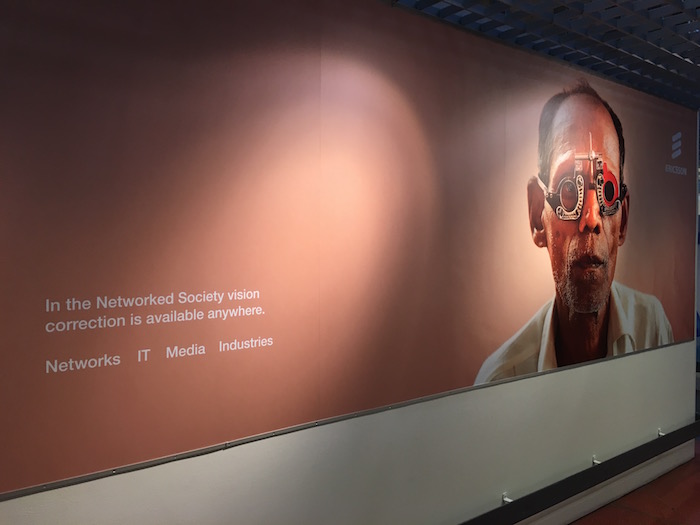(Editor’s note: Ivana Avramovic also contributed to this post.)
Scandinavian countries as a group, and Sweden in particular, are the highest functioning societies in the world.
There. We said it. On so many levels, the Nordics have a way of making the go-it-alone Americans look like disorganized incompetents.
Nowhere is that talent for societal harmony more pronounced than the Swedish penchant for streamlining public transport, at which they are arguably the best in Europe.
Expats, who tend to travel a lot, are all too familiar with the frustrating experiences we have all had at our home airports and other destinations – making costly and time-consuming arrangements to get dropped off including parking the car and squeezing into the shuttle service van, or paying through the nose for a taxi to pick us up.
By comparison, flying into and out of Stockholm Arlanda Airport is a traveler’s paradise: hugely more manageable and civilized than other airports serving major European cities. (Yeah, Frankfurt International, we’re talking about you.)
First of all, Arlanda is an international airport, but not a global hub. It’s relatively compact compared to Heathrow, Paris Charles De Gaulle or Frankfurt. Second, it was built by Swedes, who have the magical ability to design whatever – airports, autos, buildings and furnishings – that are beautiful, yet functional.
There are a lot of European cities that have great connections from the main airports to the center of the city. But I haven’t experienced one with a more beautifully integrated matrix than Stockholm.
I flew earlier this year from Dusseldorf Airport, which is a discount air hub, to Stockholm on Air Berlin. Dusseldorf is a relatively new and fairly large airport, but I figured Stockholm would be larger, reflective of its status as a European Capital City.
Nope … Stockholm Arlanda Airport is very nice, but it’s really compact. At least the international terminal I flew into is more like an airport in the American Midwest – like Omaha or someplace – than mega-European airports such as Heathrow.
That said, Arlanda is, along with Vienna and Berlin, one of the capital city airports with the least passenger traffic. In 2015, Arlanda recorded 23 million passengers, according to the airport website. That’s about 30 percent of Heathrow’s 75 million passengers. Arlanda ranks No. 22 on Wikipedia’s list of the 100 busiest airports in Europe, just behind Brussels and just ahead of Vienna.
So, combine relatively low traffic volume with the Swede’s mastery of systems and design, and you get one of the most efficient airports you’ll ever experience.
Here’s how it works:
 Fly into Arlanda from outside of Sweden, and you disembark at Terminal Five, the international terminal. Everything, as you expect, is neat, spacious, orderly and esthetically pleasing down to the wall-sized Ericsson graphics (right) in the transfer halls touting Sweden’s tech prowess.
Fly into Arlanda from outside of Sweden, and you disembark at Terminal Five, the international terminal. Everything, as you expect, is neat, spacious, orderly and esthetically pleasing down to the wall-sized Ericsson graphics (right) in the transfer halls touting Sweden’s tech prowess.
Okay, you’re on the ground, but you’re about 40 kilometers from the center of Stockholm. You have several options to get into town running from the most expensive – taxis – to the least expensive, buses. Excluding walking, of course.
Full disclosure: I had a secret weapon … my friend and collaborator Ivana Avramovic, who goes to Stockholm like I go to the bike cafe in my Dutch village, coaching me through the trip.
• Yes, we suppose you could be so extravagant as to take a taxi, which will cost you roughly 600 krona, or about $65/62.50 euros, depending on the time of day. And would get you in serious trouble with Ivana. You’re looking at a half-hour trip without traffic. Taxi stands are just outside the airport.
Ivana’s recommendation: Take a taxi when your location is not close to a central train station and you are in a pinch for time. Otherwise, be kind to the environment and enjoy the luxury of a train connection from the airport ….
• That would be the fabled Arlanda Express high-speed train, which whisks you from the airport directly into the main Stockholm train station in 20 minutes. The trick is, if you know you’re headed for Stockholm, buy your ticket in advance, which you can do here.
If you do, a one-way ticket drops to 252 kroner ($28/27 euros) from 280 kroner. Buy your ticket 45 days out, the price drops to 154 kroner, or about $16/15.70 euros. Ninety days out … they pay you. Kidding.
But, right now, there’s a Christmas Campaign through 8 January that allows you to buy group tickets (we’re assuming for families/vacationers) for as little as 350 krona, or $27/25.50 euros, for two people.
(Should you forget to buy your ticket before boarding the train, you can buy one on the train, but you pay a 100 krona ($10/10 euro) surcharge.
The train is great, with free Wi-Fi and even lounges where you can sit and work. But you’re on the Arlanda Express so briefly that you really need to just relax and look out the windows as the Swedish countryside flashes. Signage at both Arlanda and Stockholm’s central station is good. Or you can ask anyone for directions.
The Swedes might be the most helpful people ever.
If you’re fortunate enough to relocate to Sweden as an expat, you’ll find the train system has all sorts of generous discounts for regular commuters.
• Finally, you can take the bus, which is pretty foreign to us Americans. But Ivana coached me through the process last May. The Flygbussarna bus was great, and it was fun to say,  “Flygbussarna” over and over again. The airport-to-city coach had plenty of storage space inside for my weekend travel bag, and really fast, free Wi-Fi!
“Flygbussarna” over and over again. The airport-to-city coach had plenty of storage space inside for my weekend travel bag, and really fast, free Wi-Fi!
In fact, I liked the bus better than the Arlanda Express because I got to see more of Stockholm on the 40-minute coach trip than on the high-speed train.
To get on the bus, just exit the airport and immediately look around. You’ll see ticket vending machines that look like this:
The drill is pretty much the same all over Europe, with bus ticket or train ticket kiosks.
You select your language, then just follow the instructions to select the bus and ticket type. Most ticket kiosks take all MasterCard and Visa cards. Or you can go to the Flygbussarna website here and get your tickets in advance, like I should have done. Or you can buy your ticket on the train, as these attractive young Americans find out above in the official Flygbussarna vid.
Tickets are 99 krona one way, or $10/9.50 euros.
Once you get into Stockholm, the central station is huge and fabulous, with all sorts of food options and even interior furnishings shops.
The metro runs nearly 24 hours, and there are supposedly 100 stations – 47 underground and 53 street level. But that’s a post for another time.
More details:
• The rather dated Arlanda Airport website is getting a major facelift. You can see the beta here.
• The Swedish government plans to spend about 13 billion krona on upgrading and expanding Arlanda, including 1 billion krona on building 15 new buildings and renovating an existing facility in what will be a 1.5 million-square-foot aircraft maintenance mega-complex.
• There are more and more flights out of Stockholm Arlanda. EasyJet will fly to four destinations from Stockholm starting in March, 2017: London, Milan, Lyon and Geneva.
• This is a minor criticism, but one of the things that jumps out about Arlanda is the lack of high-end retail. Ralph Lauren and a Longchamps shop are as good as it gets.
Compare that to the crazy high-end retail at Heathrow, which has Etro, Zegna, Bottega Veneta, Armani, Bulgari, Burberry, Dior, Dunhill, a big Harrod’s store and Hermès.
Makes you wonder, “Why not here in one of Europe’s wealthiest cities?”
Co-CEO of Dispatches Europe. A former military reporter, I'm a serial expat who has lived in France, Turkey, Germany and the Netherlands.















